What is it about wildflowers? I see them everywhere—I always have. When I was a young girl I used to walk with Dad, and my labrador Pokey, in the woods behind our Connecticut home, searching for jack in the pulpit and skunk cabbage. When we did trip upon them, they made me laugh. There was Jack, inside the pulpit giving a boring church sermon. Skunk cabbage smelled just like its namesake—and like Pokey when she returned home after an escapade with the elusive black and white critter.
I must have been six or seven when I went trout fishing in the Catskills with my parents for the first time. A meadow outside our cottage door was dotted with Indian paintbrush. Just thinking about that the scruffy little flower takes me back there, traipsing around before breakfast through wet grasses higher than my head, chasing Pokey. Jeans soaked, my blue Keds squishing wet as I tromped past an occasional daisy nodding. I also remember sitting on the matted grasses where a deer had slept—and noticing the bugs and the scat, maybe a grasshopper or a wooly caterpillar.
At some point during those early morning jaunts, I put it all together: that the Indian paintbrush fed the resident bugs, and that those bugs, in turn, fed the swallows—the same winged acrobats that swarmed over the pond where I cast my dry fly. My fly, a Ratface MacDougal, mimicked mayflies, the favorite meal for the brook trout I was trying to catch. In one undeniable flash I understood that everything around me in the natural world was connected—and that I, too, played a role in the order of things.
***
A few weeks ago, my grown daughter Hannah and I traveled to Wyoming for a week at the CM Ranch. I was a teenager when I first visited the CM. Astride my horse—and while wading in trout streams—I fell in love with the West, its wide sky that reached over a rugged landscape, the creatures and people who made it home. There’s much to ponder about my relationship with the CM valley; her revelations have long sustained me. For now I only want to tell you one thing: I returned from the ranch last month with my iPhone filled with photos of wildflowers.
Badlands in Dubois Wyoming
Like many aspects of western topography, the flowers make a grandiose impression. The colors are vibrant, the blossoms enormous compared to their New England cousins. One morning when Hannah and I hiked in the Badlands, we noticed a burst of crimson on a ridge high above us— we decided to hike right to it.
Indian paintbrush, Dubois Wyoming
Reaching the clump of crimson paintbrush felt like a home coming . Home to the timeless beauty of that flower I’d first met in that Catskill meadow. Home in the context of recalling my beginnings—and about where it is that I still might go. When Hannah and I paused to admire the paintbrush, we talked about its unlikely vigor living in the parched sandstone landscape. Then we spotted another scarlet cluster. We hiked ever higher.
***
Back in Denali, I greeted friends at a local cafe. Our conversation over coffee and rhubarb ginger scones had everything to do with flowers. “Oh my gosh, have you gone high on the Savage Trail? The wildflowers are crazy this year, peaking all at once and so early!” a friend told us with delight. “Make sure you get out there. You don’t want to miss out.”
high country, Denali Park
Mark and I have been watching the flowers for months. It was early in April when we spotted the first pasqueflower, heralding the premature ending to an unusually warm winter. The fireweed surrounding our dog yard started blooming in late June. Local wisdom claims that fireweed blooms six weeks before winter. We may be in for a big surprise, but I doubt winter will begin on August first.
.
Pasqueflower. Gouda and wild iris. Fireweed blooming early July.
The reality of Alaska’s accelerated climate change is disturbing, but I have to admit: this has been one magnificent summer. It’s early July and we’ve already enjoyed three snowless months of warm weather—weeks of 70-80 degree sunshine have been punctuated with brief interludes of sustaining, wildfire-preventing rain. Walking dogs in my flip-flops, and eating breakfast on the cabin deck while listening to the call of warblers and kinglets have become welcome and regular rituals, reminiscent of childhood summers in New England and Wyoming. But don’t be fooled: the sunshine and rainbows, blossoms, and birdsong carry a sobering message about our warming planet.
In his poem “Hamatreya,” Ralph Waldo Emerson writes about farmers and their land. Their dedication birthed from hard work affords an intimate connection to the earth, yet in this excerpt Emerson offers a warning:
Where are these men? Asleep beneath their grounds:
And strangers, fond as they, their furrows plough.
Earth laughs in flowers, to see her boastful boys
Earth-proud, proud of the earth which is not theirs;
Who steer the plough, but cannot steer their feet
Clear of the grave.
Emerson’s poem calls me out. Who am I, to celebrate my wild backyard without addressing climate change, the obvious and current danger. I don’t want to be one of those “boastful boys.”
Earth laughs in flowers. Earth is not ours, but if nothing else, I do believe we are called to be vigilant stewards of her bounty. Consider these local headlines from the last several weeks: Thanks to Climate Change, the Arctic is Turning Green. Amid Melting Arctic Ice, Kerry sees Looming Climate Catastrophe. The Arctic’s Pretty But Alarming Strawberry Pink Snow. I don’t claim to have answers, but it feels wrong to tune out bad news.
With thoughts about our warming planet spinning through my weary head, I went hiking this weekend with Mark and a friend. I didn’t expect to see many flowers. I figured we’d missed our chance, but in hope of late bloomers, we charted a course in the high country. At first we passed lousewort and lupine already gone to seed, but after walking up and over a knoll, I spotted a cluster of shooting stars. Then more speckles of color beckoned us further. From one tuft of blossoms to the next, we moved. Connecting the dots from cotton grass to arnica, moss campion, and elegant paintbrush. Soothed by cooling breezes, the three of us ascended through a lingering celebration of summer.
shooting star and elegant paintbrush, Denali National Park
I returned home from our escapade renewed—and far better able to contain my inner angst that wavers between hope and despair. Perhaps that’s the generosity of wildflowers: they deliver messages of vitality and joy—as well as dire warning.
Earth laughs in flowers. I wonder if this is Earth’s way of keeping us honest about our place in the grand scheme of things. Maybe it’s the invigorating sound of laughter that I’ve heard all along.

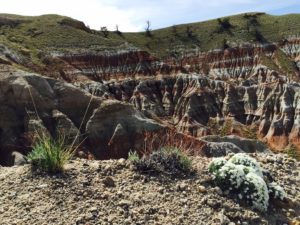
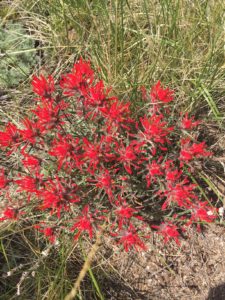
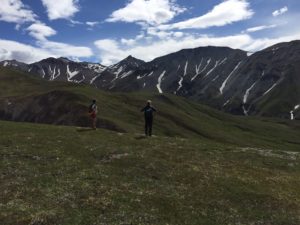
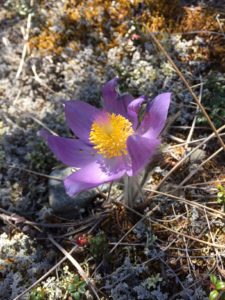
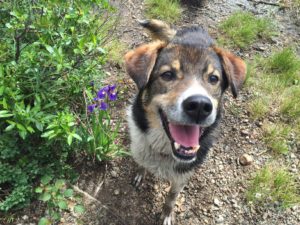
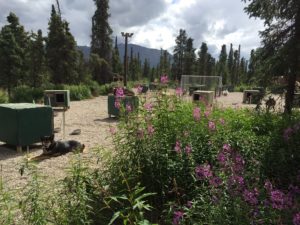
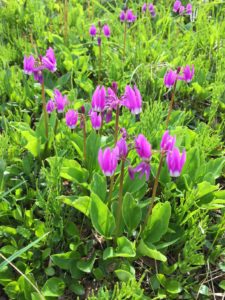
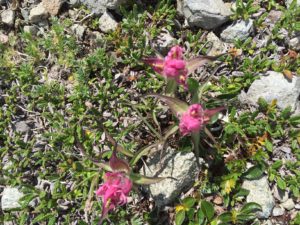

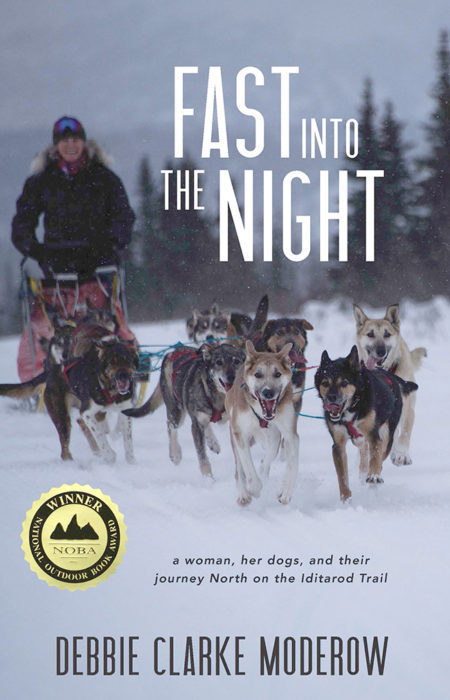
Leave A Comment